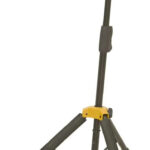For dedicated Guitar Hero fans looking to maximize their gameplay, especially with titles like Guitar Hero 2, controller compatibility can be a crucial factor. You might be surprised to learn that while a standard PS2 controller seems like the obvious choice for a PlayStation 2 console, it actually falls short when it comes to older Guitar Hero games like GH2. Interestingly, for the original Guitar Hero (GH1), a PS2 controller isn’t an issue, opening up possibilities for creating custom guitars specifically tailored for that game using PS2 components. However, when you step into the realm of Guitar Hero 2 and subsequent versions (excluding Rocks the 80s, which behaves similarly to GH2), the controller requirements shift, making a PS1 controller the preferred option for modifications.
The reason behind GH2’s pickiness regarding controllers remains somewhat of a mystery to many players. It boils down to the game’s need for a digital controller that also incorporates analog sticks. While the PS2 controller is technically analog, even boasting pressure-sensitive buttons, it doesn’t quite meet the specific input requirements of GH2 in the same way a PS1 controller does for custom guitar setups. Therefore, for those aiming for seamless compatibility with Guitar Hero 2 and potentially later iterations in the series, a PS1 controller becomes the key component.
Many DIY enthusiasts have turned to readily available and sometimes less aesthetically pleasing PS1 controllers for their Guitar Hero projects. These controllers, despite their appearance, house the necessary circuitry to bridge the gap between your custom guitar and the PS2 console when playing GH2.
Let’s delve into the wiring specifics, outlining how to connect a PS1 controller to your DIY Guitar Hero guitar:
-
Simulating D-pad Down (Guitar Mode Activation): Solder a connection to the left d-pad’s “down” input as if it were permanently pressed. This clever trick signals to the PS2 system that a guitar controller is connected, which is essential for proper game recognition. You can test this in-game; pressing down on a correctly wired controller will typically open the tutorial menu.
-
Ground (GND): The Common Link: Establish a ground connection. Fortunately, PS1 controller boards usually provide multiple ground outlets, which will be needed for all the button and switch connections in your guitar.
-
D-pad Up: Strumming Up: Connect the “up” direction on the d-pad to your strum bar’s “up strum” switch.
-
L2 Button: Star Power Motion Sensor (Tilt): Utilize the L2 button connections (often with two outlets) for integrating a motion sensor into your guitar. This will activate Star Power when you tilt the guitar upwards during gameplay.
-
D-pad Down: Strumming Down: Connect the “down” direction on the d-pad to your strum bar’s “down strum” switch.
-
Select Button: Alternative Star Power Activation: While the primary function of the Select button in this context is Star Power activation, it’s worth noting that other uses within the game are limited or non-existent.
-
Start Button: Essential Game Navigation: The Start button is crucial for pausing the game, accessing the in-game menu, and navigating various game screens.
-
Square Button: Orange Fret Button: Wire the Square button to your orange fret button. Be cautious with soldering to the square button contact, as some PS1 controller boards may lack an extra solder pad specifically for this button.
-
R2 Button: Green Fret Button: Connect the R2 button to your green fret button.
-
Cross Button (X): Blue Fret Button: Wire the Cross button to your blue fret button.
-
Circle Button: Red Fret Button: Connect the Circle button to your red fret button.
-
Triangle Button: Yellow Fret Button: Wire the Triangle button to your yellow fret button.
-
Left Analog Stick Y-axis: Whammy Bar (Analog Control): The Y-axis of the left analog stick is used for the whammy bar. Connect it as a trimmer between the Ground (GND) and Voltage Common Collector (Ucc).
-
Voltage Common Collector (Ucc): Power Source: Locate a Ucc point on the PS1 controller board. This serves as a convenient and easily accessible power source for your whammy bar circuit.
Throughout your wiring process, always refer back to these steps to ensure accurate connections.
A Practical Tip: Consider removing the rumble motors from the PS1 controller. These motors serve no function in Guitar Hero gameplay and can be safely removed to save space and potentially simplify your wiring.
By following these instructions and utilizing a PS1 controller, you can successfully build a custom Guitar Hero guitar that is fully compatible with PS2 consoles and games like Guitar Hero 2, unlocking a more authentic and enjoyable rhythm game experience.

